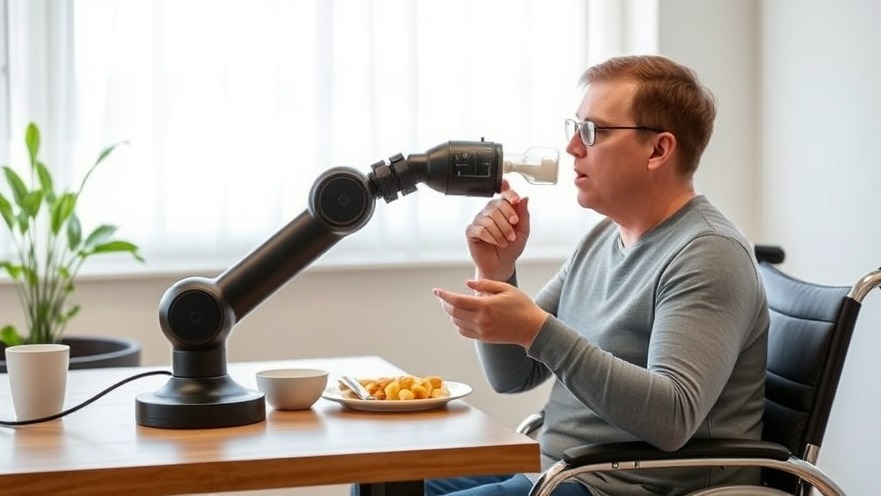
Empowering Independence: The Rise of Assistive Feeding Robots
In an enlightening leap towards enhancing the dining experience for individuals with motor impairments, the University of Washington's Personal Robotics Lab has unveiled a transformative assistive-feeding robot named ADA (Assistive Dexterous Arm). This robotic arm, designed to help those unable to eat independently, has progressed significantly from its initial prototype that could only serve marshmallows. After more than a decade of meticulous research and development, the robot is now capable of serving a full range of meals, demonstrating its potential to reshape the dining experiences of those in need.
From Laboratory Breakthroughs to Real-World Applications
The journey of ADA from the confines of laboratory testing to real-world applications has taken off recently with two pivotal studies. The first study evaluated its performance in diverse meal environments, such as a cafeteria, office, and conference rooms, showcasing the robot's versatility and reliability outside controlled settings. The second involved community researcher Jonathan Ko, who experienced five consecutive days of home dining assisted by ADA. This shift from lab contexts to real environments is crucial for understanding varied user interactions and logistics associated with using these technologies at home.
The Technology Behind ADA: Enhancing Dining and Social Interaction
ADA operates through an intuitive web application, allowing users to specify the desired bite they wish to have. This user-driven engagement underscores not only the functional aspect of robotic eating assistance but also its potential to enhance the social aspects of dining, a critical factor often overlooked in assistive technologies. Social interactions during meals are important for emotional well-being, and innovations like ADA seek to bridge the gap for individuals facing mobility challenges.
Success Rates and User Experiences in Varied Environments
In the initial study, ADA achieved an impressive 80% accuracy in acquiring meals, a significant success threshold for users who had previously participated in isolated lab studies. However, real-world trials revealed that factors like lighting and the robot's weight could impact its functionality. These observations reinforce the critical elements of user customization and adaptability, which are necessary for catering to unique dining circumstances at home.
The Importance of Autonomy in Assistive Robots
In this context, the ability of users to adapt the tool as per their dining surroundings—whether adjusting for low-light conditions while watching TV or managing the weight of the robot—is a defining characteristic of ADA. This adaptability ensures that while the technology serves its primary purpose of feeding, it also fosters independence and autonomy for users, aligning with broader goals in assistive technology development.
Future Directions for Assistive Robotics
As a multidisciplinary research team prepares to present their findings at the ACM/IEEE International Conference on Human-Robot Interaction, they anticipate a future where personalized feedback plays a central role in the iterative design of such technologies. The ongoing refinement of ADA will help bridge the gap between assistive technology and user autonomy, making life more manageable—and meals more enjoyable—for individuals with disabilities.
Conclusion: A Step Towards Inclusivity and Engagement
The research into assistive feeding robots signifies a profound commitment to inclusivity and social engagement through technology. ADA stands not just as a mechanical marvel but as a symbol of dignity and independence for users across various settings. As advancements continue in robotics and assistive technology, we have an unprecedented opportunity to enhance quality of life for individuals with mobility challenges, fostering connection and normalization in everyday tasks like dining.
 Add Row
Add Row  Add
Add 






Write A Comment